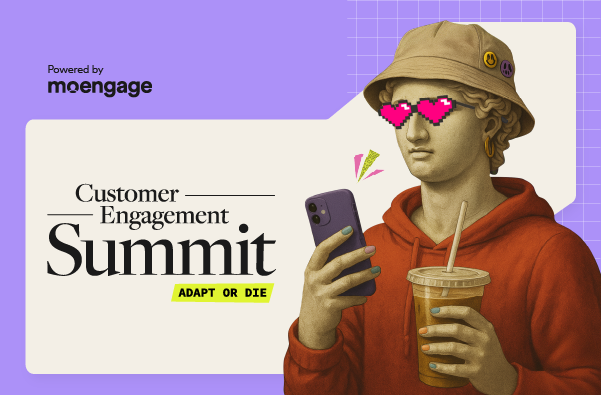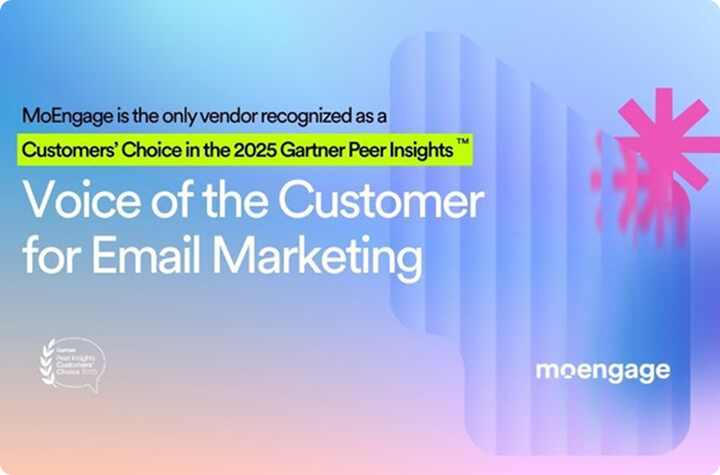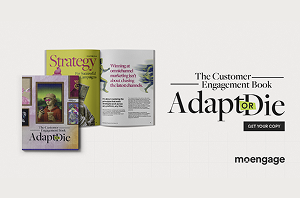Intro
The recent #GROWTHAsia 2020 was a digital summit for marketers, product leaders, founders, and anybody interested in customer delight in a mobile-first world.
Among the insight-rich sessions was one on how companies such as Tokopedia, OVO, Mapemall, and Verticurl orchestrate personalization across the customer journey. Divya Jagwani (Growth Manager, SEA – MoEngage) takes a deep dive into the subject with industry experts: Agnes Lie (Head of Growth Marketing, OVO), Christina Lee (Senior Director of Client Success, Verticurl), Jenna Kosasih (Chief Commercial Officer, Mapemall), and Olivia Kurniawati (Head of Product Marketing, Tokopedia).
In an Infosys survey, 85% of customers said that personalization had some impact on what they purchase, and 25% said the impact was significant. As Divya Jagwami points out, it leads to a better shopping experience, better word of mouth, and more loyalty.
Do businesses need a sophisticated tech stack or large budgets to create and scale such personalization? How are leading customer-centric brands leveraging large amounts of online data to tailor shopping experiences? Read on to find out.
Getting the Right Message To the Right Person
For Agnes Lie, personalization has become a lot more complex than before. It’s not just about changing copy and messages. Managing all the data and complexities is no guarantee of success.
“One key takeaway is really to figure out the type of personalization and sophistication required, based on the product and results expected.”
At Ovo, there are two types:
— Basic internal personalization, leveraging internal data such as name, optimal time, and purchase reminders. These are largely automated.
— Signal-based personalization, where they combine information on the user with predictive and deterministic modeling to anticipate churn rate, propensity modeling, promo sensitivity, and so on.
An example of a category where this can be gainfully used is insurance, which is need-based. Contextual communication here would be, for example, tracking fuel purchases or toy purchases to determine whether the customer has a car or a kid and then communicate accordingly.
Foundations of End-to-end Personalization Strategy
Jenna Kosasih says that at Mapemall, they deal with international brands in the auto category, and connect directly to their brick-and-mortar stores. Thus, they use many learnings from the physical stores themselves.
“We take an example of actual consumer behavior offline and try to mimic it at some level on the online platform.”
Kosasih says they have two types of buyers, similar to the types in a mall. First, the accidental buyers, who come to the website with no specific intention of buying. Second, the intentional buyer, who has a clear idea of what to purchase.
“For me, personalization starts from the moment the customer walks into the mall or the home page.”
When you create a journey based on their digital path, you can redirect them and create a shortcut to the promotion or brand that they need. Much of it, for her, is a merging of offline and online.
What Should A Short-term Personalization Strategy Look Like?
If a marketer is looking at user personalization, what should their next 6 to 12-month plan be? Agnes Lie says that would depend on how much complexity is required.
There are two things to keep in mind.
— The first: tools to collect the information and data on user behavior. Where are they coming from, and where are the drop-offs in the funnel? The tech stack should cover the ability to track and collect this information, store it for easy accessibility and analysis, and user delivery. This could give rise to segmentation and A/B testing.
— Second, the set-up and ways of working towards personalization. LIe’s organization has an experimentation unit with people from marketing, data, and tech to figure out the personalization path. Then they carry out small experiments to check which ones work best. This is done continuously to develop and refine insights.
“The mindset is always, let’s just do all we can, even if it’s a 1% incremental effort, it does help in the long term.”
The Process of Crafting the Consumer Journey
Olivia Kurniawati feels that, to begin with, everyone on the team and then the organization needs to be on the same page. They need to be customer-obsessed, and they need to know the end goal.
In every buyer segment, Kurniawati and the team try to understand the journey they are going through. From registration to log-in to add-to-cart to payment. By checking funnel-to-funnel behavior they figure out the gaps. They identify the biggest ones to try and understand what the real issue is, and what can be solved by marketing and communication.
So for 10 use cases, they can plan 10 journeys and also prioritize which one is most important. The next step is to continuously experiment with the journey to see that they’re getting the results expected.
Post-Covid Changes in Consumer Behavior
Without a doubt, feels Christina Lee, we’re seeing consumers shifting online from brick-and-mortar stores. A large part of consumption is transitioning to e-commerce stores as well.
What consumers are shopping for has also shifted, from groceries to medication to sports equipment. “Consumers are much more mindful about what they’re buying nowadays.” For example, they’re mindful of food wastage and try to avoid it. Another behavior that seems set to continue is to be more health-conscious.
“In terms of the B2B ecosystem, we’re also seeing a transition to the virtual event space.”
This is why an online strategy for personalization and engagement has become even more critical. In the B2B space, account-based marketing is important. This means identifying the top accounts and clients to target and having organizational alignment for the same.
Building Organizational Consensus for Personalization
Jenna Kosasih feels that experimentation towards an end goal is not necessarily something that many stakeholders understand. It takes time to show results. It’s important to try and convince internal stakeholders and clients of this approach.
Education-sharing and knowledge are necessary. Analogies can be drawn between offline and offline behavior. Budgets can be built into a larger package that combines functions, as in an omnichannel approach.
Asking for longer timelines is another way of convincing internal stakeholders. This is especially because it can take time for experiments to bear fruit.
Challenges in Scaling Personalization
Christina Lee sees three main challenges when it comes to scaling personalization.
- Data collection: how to collect, new ways of collecting, how to store.
- Data activation: the technological aspects of scaling, the skills to drive and use the data.
- Organizational alignment: marketing sales and customer experience teams should not be in silos and try to unify data for similar customer experiences.
Resolving one or two of the above won’t work in the long run. All three have to be managed. After all: “You may have a Ferrari, but you still need a driver, a crew, and a team to operate it.”
Subscribe to Our Library Updates
Be the first to access actionable reports, guides, tips, videos, podcasts from experts in Customer Engagement, retention and more!













